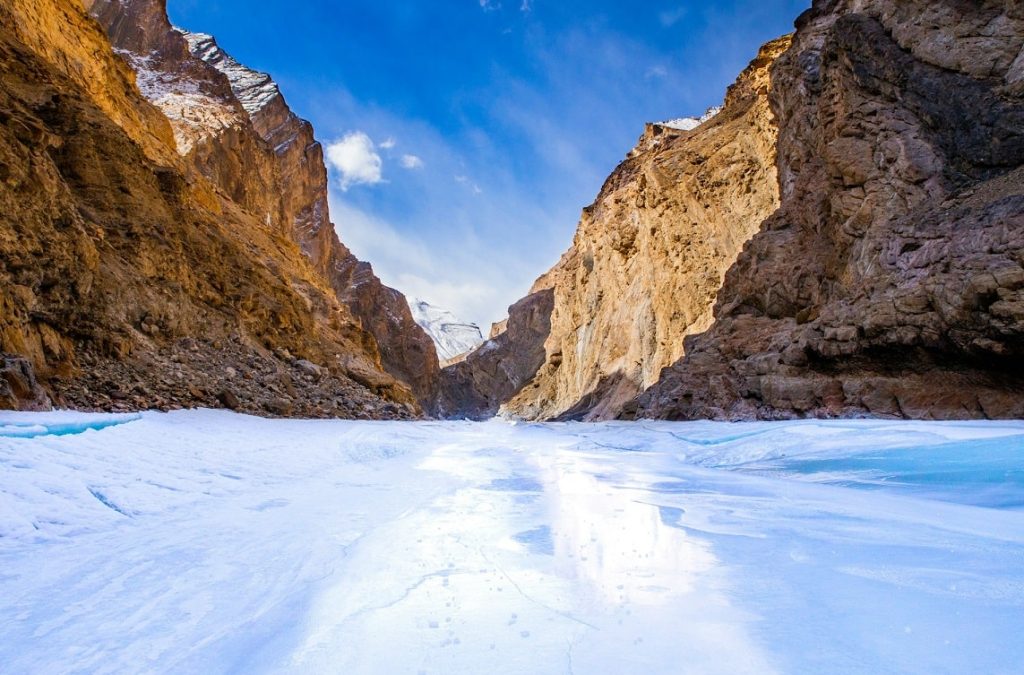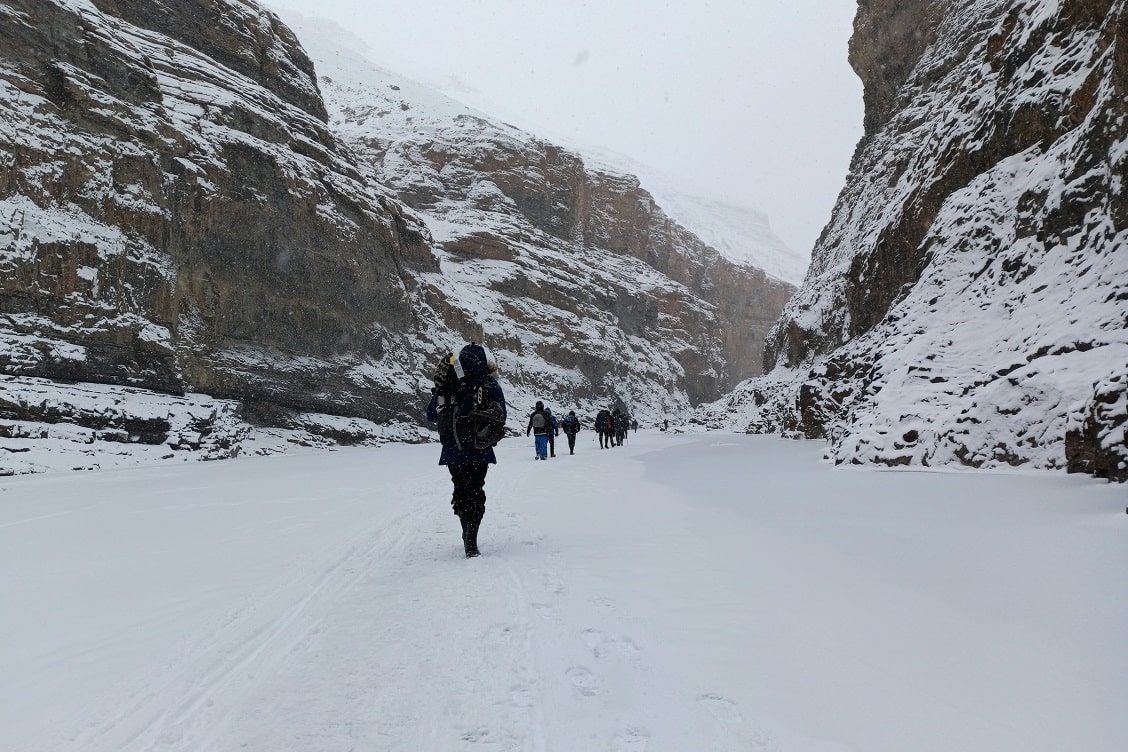The Chadar Trek, also known as the Zanskar Frozen River Trek, is located in the Zanskar region of Ladakh, in the northern part of India. The trek takes place along the frozen Zanskar River, which flows through deep gorges and canyons in the remote and rugged terrain of the Himalayas. The starting point of the Chadar Trek is typically the village of Chilling, which is about 65 kilometers away from Leh, the capital of Ladakh. From Chilling, trekkers embark on a multi-day journey along the frozen river, passing through breathtaking landscapes of ice formations, snow-covered mountains, and pristine wilderness. The Chadar Trek offers a unique and challenging adventure for trekkers seeking to explore the remote and spectacular beauty of the Himalayas during the winter months.
Know about the weather condition and Ladakh Temperature.
How to reach for chadar trek?
Reaching the starting point of the Chadar Trek involves traveling to Leh, the capital of Ladakh, which serves as the gateway to the trekking region. Here’s how you can reach Leh:
By Air: The easiest way to reach Leh is by air. Kushok Bakula Rimpochee Airport in Leh is well-connected to major cities in India, including Delhi, Mumbai, Kolkata, and Chandigarh. Several airlines operate regular flights to Leh, especially during the peak tourist season from May to September. Once you reach Leh, you can proceed to the trek starting point with the help of a local travel agency or trekking organizer.
By Road: If you prefer traveling by road, you can reach Leh by road from Srinagar or Manali. The Srinagar-Leh Highway (NH1) and the Manali-Leh Highway (NH3) are the two main road routes to Leh. However, these routes are open only during the summer months from May to October due to heavy snowfall and road closures in winter. Both routes offer stunning landscapes, high mountain passes, and adventurous driving experiences. It’s advisable to check the road conditions and weather forecasts before embarking on the journey.
By Bus: State-run and private buses operate regular services to Leh from Srinagar and Manali during the summer months when the roads are open. The journey by bus can be long and arduous, taking around 2 days from Srinagar and 2-3 days from Manali. However, it’s a budget-friendly option for travelers looking to explore the scenic beauty of the region.
Once you reach Leh, you can arrange for transportation to Chilling, the starting point of the Chadar Trek, which is about 65 kilometers away from Leh. It’s recommended to book a trekking package with a reputable trekking company or local guide who can arrange transportation, permits, accommodation, and provide guidance throughout the trek. Additionally, acclimatization to the high altitude in Leh is essential before starting the Chadar Trek to avoid altitude sickness.
Here is the list of best Places to Visit in leh ladakh.
Best Time for Chadar Trek

The best time for the Chadar Trek, also known as the Zanskar Frozen River Trek, is typically during the winter months of January and February. This is when the temperatures in the Zanskar region of Ladakh drop significantly, causing the Zanskar River to freeze over and form a thick sheet of ice.
During this time, the frozen river provides a unique and surreal landscape for trekkers to traverse, with the icy cliffs, frozen waterfalls, and snow-covered mountains creating a breathtaking backdrop. Additionally, the frozen river allows for safe passage and relatively easy navigation compared to other times of the year when the river is flowing.
Explore the Manali To Leh Road Trip Guide.
However, it’s essential to note that the weather conditions during the Chadar Trek can be extremely harsh, with temperatures dropping well below freezing and the possibility of snowfall and strong winds. Therefore, it’s crucial to be well-prepared with appropriate cold-weather gear and to travel with experienced guides who are familiar with the terrain and can ensure the safety of the trekkers.










